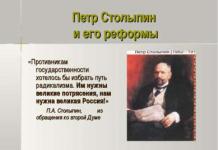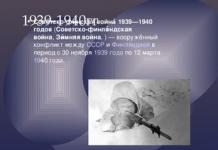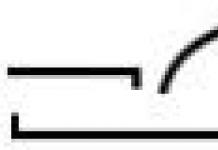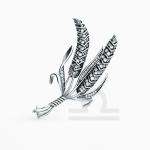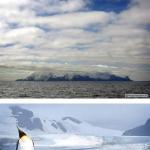Soviet-Finnish
war(1939-1940)
{

19391940
no
her
ae
Soviet War of 1939-1940
yae
years (Soviet Finnish
war, imaginary war
,) - armed
conflict between the USSR and Finland in
period from November 30, 1939 to March 12
1940.
no

On November 26, 1939, the USSR government sent a note of protest
to the Finnish government regarding the artillery shelling,
which, according to the Soviet side, was committed with
Finnish territory. Responsibility for starting the war
actions were entirely entrusted to Finland. War
ended with the signing of the Moscow Peace Treaty. Included
The USSR turned out to be 11% of the territory of Finland (with the second largest
the size of the city of Vyborg). 430 thousand Finnish inhabitants were
forcibly resettled by Finland from front-line areas
deep into the country and lost their property.
Start.

According to a number of historians, this
USSR offensive operation against
Finland belongs to World War II
war The outbreak of hostilities led to
that in December 1939 the USSR as
the aggressor was expelled from the League of Nations

Finland
Swedish
volunteer
Estonia
Great Britain
Opponents of the USSR

K. E. Voroshilov
S. K. Timoshenko
K. G. E. Mannerheim
Hjalmar Siilasvuo
commanders

According to statements from the Soviet side, the goal
The USSR wanted to achieve by military means what it could not
managed to make it peaceful: ensure security
Leningrad, which was dangerously close
from the border and in the event of the outbreak of war (in which
Finland was ready to provide its
territory to the enemies of the USSR as a springboard)
would inevitably be captured in the first days (or even
watch). In 1931 Leningrad was separated from
region and became a city of republican
submission. Part of the boundaries of some subordinates
appeared to the Lensoviet Territories at the same time
border between the USSR and Finland
Causes of the war

Cartridges for rifles, machine guns and machine guns - by 2.5
shells for mortars, field guns and howitzers - by 1
months;
month;
fuels and lubricants - for 2 months;
aviation gasoline - for 1 month.
Armed forces

By March 1940, the Finnish government realized that,
despite demands for continued resistance,
no military assistance except volunteers and weapons,
Finland will not receive it from its allies. After the breakthrough
“Mannerheim Line” Finland was obviously not in
able to hold back the advance of the Red Army. Got up
a real threat of a complete takeover of the country, followed by
would have followed either annexation to the USSR or a change
government to pro-Soviet.
Therefore, the Finnish government turned to the USSR with
proposal to begin peace negotiations. March 7 at
The Finnish delegation arrived in Moscow, and already on March 12
peace treaty concluded
Completed by: Prokhorova
I.A. A history teacher
Slide 1
Slide 2

Slide 3
 Karl Gu became Emil Mannerge (1867-1951), military leader, marshal (1933). Born on June 4 (16), 1867 in the town of Vilnius, near Turku. He graduated from the University of Helsingfors (1877) and the Nikolaev Cavalry School (St. Petersburg). Until 1917 he served in the Russian army. During the 1st World War he commanded a formation; Lieutenant General (1917); in 1918 he commanded the Finnish army. From December 1918 to July 1919, regent of Finland, from 1939 commander-in-chief of the Finnish army, chairman of the Council of National Defense (from 1931). He led the actions of the Finnish army during the Soviet-Finnish War of 1939-1940. During World War 2 he was an ally of Hitler. In September 1944 he was forced to decide to withdraw from the Berlin Pact of 1940 and from the war under pressure from the Soviet government. Since August 1944 - President of Finland. In March 1946 he retired. He died on January 28, 1951 in Lausanne.
Karl Gu became Emil Mannerge (1867-1951), military leader, marshal (1933). Born on June 4 (16), 1867 in the town of Vilnius, near Turku. He graduated from the University of Helsingfors (1877) and the Nikolaev Cavalry School (St. Petersburg). Until 1917 he served in the Russian army. During the 1st World War he commanded a formation; Lieutenant General (1917); in 1918 he commanded the Finnish army. From December 1918 to July 1919, regent of Finland, from 1939 commander-in-chief of the Finnish army, chairman of the Council of National Defense (from 1931). He led the actions of the Finnish army during the Soviet-Finnish War of 1939-1940. During World War 2 he was an ally of Hitler. In September 1944 he was forced to decide to withdraw from the Berlin Pact of 1940 and from the war under pressure from the Soviet government. Since August 1944 - President of Finland. In March 1946 he retired. He died on January 28, 1951 in Lausanne.
Slide 4
 Voroshilov Kliment Efremovich (1881-1969). Party member since 1903. Since 1918 - commander and member of the Revolutionary Military Council of a number of armies and fronts. Since 1925 - People's Commissar for Military and Naval Affairs and Chairman of the Revolutionary Military Council of the USSR. He played a leading role in the purge of the Red Army in 1936-38, and served as People's Commissar of Defense in 1934-40. Since 1940 - Deputy Chairman of the Council of People's Commissars of the USSR and Chairman of the Defense Committee of the Council of People's Commissars of the USSR. During the Great Patriotic War - member of the State Defense Committee. Since 1946 - Deputy Chairman of the Council of Ministers of the USSR. In 1953-1960 - Chairman of the Presidium of the Supreme Soviet of the USSR. In 1921-1961 and since 1966 - member of the CPSU Central Committee. In 1926-1960 - Member of the Politburo (Presidium) of the Party Central Committee.
Voroshilov Kliment Efremovich (1881-1969). Party member since 1903. Since 1918 - commander and member of the Revolutionary Military Council of a number of armies and fronts. Since 1925 - People's Commissar for Military and Naval Affairs and Chairman of the Revolutionary Military Council of the USSR. He played a leading role in the purge of the Red Army in 1936-38, and served as People's Commissar of Defense in 1934-40. Since 1940 - Deputy Chairman of the Council of People's Commissars of the USSR and Chairman of the Defense Committee of the Council of People's Commissars of the USSR. During the Great Patriotic War - member of the State Defense Committee. Since 1946 - Deputy Chairman of the Council of Ministers of the USSR. In 1953-1960 - Chairman of the Presidium of the Supreme Soviet of the USSR. In 1921-1961 and since 1966 - member of the CPSU Central Committee. In 1926-1960 - Member of the Politburo (Presidium) of the Party Central Committee.
Slide 5
 A prominent participant in the Civil War, comrade-in-arms of S.M. Budyonny. In 1937-40 com. troops of a number of Military Districts, in 1940-41 People's Commissar of Defense of the USSR. During the Second World War he commanded the fronts and the South-Western direction (1941-42); from 1943 he was a representative of the Headquarters on a number of fronts. After the war, commander of the Belarusian Military District (1949-60). Knight of the Order of Victory, Twice Hero of the Soviet Union.
A prominent participant in the Civil War, comrade-in-arms of S.M. Budyonny. In 1937-40 com. troops of a number of Military Districts, in 1940-41 People's Commissar of Defense of the USSR. During the Second World War he commanded the fronts and the South-Western direction (1941-42); from 1943 he was a representative of the Headquarters on a number of fronts. After the war, commander of the Belarusian Military District (1949-60). Knight of the Order of Victory, Twice Hero of the Soviet Union.
Slide 6

Slide 7
 The Soviet-Finnish border ran only 32 km from Leningrad, which created the danger of the city being quickly captured in the event of war. The USSR invited Finland to transfer to it a small part of the Karelian Isthmus and a number of islands in the Gulf of Finland. In exchange, the Finns were offered large territories of the USSR, including the city of Petrozavodsk.
The Soviet-Finnish border ran only 32 km from Leningrad, which created the danger of the city being quickly captured in the event of war. The USSR invited Finland to transfer to it a small part of the Karelian Isthmus and a number of islands in the Gulf of Finland. In exchange, the Finns were offered large territories of the USSR, including the city of Petrozavodsk.
Slide 8
 Finland refused to sign an agreement with the USSR on mutual assistance; the agreement was declared an act indicating the hostility of the intentions of the Finnish leadership. In response, the USSR announced the denunciation of the non-aggression treaty with Finland.
Finland refused to sign an agreement with the USSR on mutual assistance; the agreement was declared an act indicating the hostility of the intentions of the Finnish leadership. In response, the USSR announced the denunciation of the non-aggression treaty with Finland.
Slide 9
 On November 30, the Red Army began active military operations against Finnish troops. However, the Finns put up vigorous resistance. Soviet troops suffered huge losses and were stuck for a long time in the deeply echeloned system of Mannerheim's fortification lines on the Karelian Isthmus.
On November 30, the Red Army began active military operations against Finnish troops. However, the Finns put up vigorous resistance. Soviet troops suffered huge losses and were stuck for a long time in the deeply echeloned system of Mannerheim's fortification lines on the Karelian Isthmus.
Slide 10
 In February 1940, the Red Army launched a new offensive, breaking through the Mannerheim Line. Finland sued for peace. In March, a peace treaty was signed in Moscow. As a result, all territorial claims were satisfied. The Finnish campaign led to serious losses for the Red Army and undermined the prestige of the army. Hitler calculated that the USSR was not capable of conducting effective combat operations in a modern war. Conclusions were made in Moscow: K.E. Voroshilov was removed from the post of People's Commissar of Defense, and his place was taken by S.K. Tymoshenko.
In February 1940, the Red Army launched a new offensive, breaking through the Mannerheim Line. Finland sued for peace. In March, a peace treaty was signed in Moscow. As a result, all territorial claims were satisfied. The Finnish campaign led to serious losses for the Red Army and undermined the prestige of the army. Hitler calculated that the USSR was not capable of conducting effective combat operations in a modern war. Conclusions were made in Moscow: K.E. Voroshilov was removed from the post of People's Commissar of Defense, and his place was taken by S.K. Tymoshenko.
Main issuesSoviet-Finnish relations in 1918-1939
Causes of the war and intentions of the parties
Armed forces of the USSR and Finland
Defensive system of the Mannerheim line.
The reasons for the failures of the Red Army at the beginning of the war.
Peace Treaty March 12, 1940
Why "Unknown War"?
The war is over, but the problems remain!
Russian-Finnish relations today.
2-focus on
England and France.
Maintaining independence.
Scandinavian neutrality.
Fear of aggression from outside
THE USSR.
USSR - discontent
border security from
Finland.
For socialist Finland.
Why did the 1938-1939 negotiations stall?
The Finns did not want to give interritory in Karelian
isthmus and Finnish
gulf and conclude
nonaggression pact
The USSR is dissatisfied
border security
from Finland and
Gulf of Finland
Armed forces of the USSR and Finland
USSRFinland
Population
173
3,5
Army
960
400
Tanks
1476
50
Art. Guns
2759
530
aircraft
2446
118
Causes of the war and intentions of the parties
FinlandUSSR
Military fear
Finnish contacts with
England and
Germany.
Move
border.
Control
The Gulf of Finland.
Secure
Murmansk.
Bring it to the Finns
Soviet power.
Defense of one's own
borders.
Preservation
independence.
Hope for
help from England and
France.
Who provoked the war?
Artillery shots near the villageMaynila - a reason for war?
Which side of the border were you on?
was there a shelling?
Were there any shots?
November 30, 1939
- Start
war.
Propaganda of opponents
Soviet UnionFinland
Defensive system of the Mannerheim line.
Length 140 km. Lakes, swamps,rivers, 210 bunkers, 546 bunkers. Army 100
thousand, 460 guns, 200 aircraft, 25 tanks.
Forest rubble,
minefields,
45 rows of wire fences
Concrete
anti-tank
structures
Main characters
Reasons for the failures of the Red Army at the beginning of the war
Political miscalculationsleadership of the USSR.
Military mistakes
command.
Lack of preparation
army and erroneous
military tactics.
The resilience of the Finnish army.
Breaking through the Mannerheim Line
Courage and resourcefulnessSoviet soldiers
New combat tactics
actions
Numerical and technical
superiority of the Red Army
Capture of Vyborg
Theaters of war
In Karelianisthmus
In the north and center
Karelia
In Baltic
coast
Fighting in the air
Results of the war Peace Treaty March 12, 1940
USSRHas gained
territory
Lost
killed
70 thousand
Lost
wounded
176 thousand
Finland
Lost
territory
Lost
killed
23 thousand
Lost
wounded
44 thousand
Why "unknown war"?
1. The USSR came up with territorialclaims against Finland.
2. The USSR was the first to start a military
actions
3. The USSR was expelled from the League
nations as aggressor
4.Victory over the Finnish army
It didn’t come at all with “little blood”
5. Despite the victory, the USSR suffered
moral defeat in this war.
The war is over, but the problems remain!
War with Finland in 1941-1944years.
Peace Treaty with Finland.
Is the territorial issue closed?
Russian-Finnish relations today.
Border stabilityFinland's neutrality benefits everyone
TEST
Economic, political and
cultural cooperation. Test
1. When did the Soviet-Finnish war begin?
A) November 30, 1939
B) December 12, 1939
B) November 26, 1939
2. Marshall, commander-in-chief of the Finnish army, former lieutenant general of the tsarist army.
A) Enquist
B) Koivisto
B) Mannerheim
3. The main support of the Finnish army was the line
A) Maginot
B) Mannerheim
B) Siegfried
4. What goals did the Soviet leadership pursue in this war?
A) Capture the entire territory of Finland
B) Push back the borders by gaining Finnish territory
B) If possible, make Finland Soviet
5. When and why was the USSR expelled from the League of Nations?
A) For the conclusion of a pact with Germany in August 1939.
B) For the introduction of troops into Poland in September 1939.
B) For the war with Finland in December 1939 6. What are the reasons for the failures of the Red Army at the beginning of the war?
A) Lack of weapons and ammunition
B) Weak discipline in the troops
C) Lack of preparedness of personnel and underestimation of the enemy
7. Indicate the period when Finland was part of the Russian Empire.
A) 1800-1918
B) 1807-1920
B) 1809 – 1917
8. When was the peace treaty between the USSR and Finland concluded?
A) March 12, 1940
B) December 31, 1940
B) March 21, 1941
9. Why were the details of the war little known in the USSR?
A) Because the war was of no interest due to the clarity of all the circumstances.
B) Because the country's leadership tried to hide failures
and huge losses in the Red Army during the war
B) Because the leadership of Finland asked not
disseminate information about the defeat of the country and its
territorial losses.
10. What territories did the Soviet Union receive at the end of the war?
A) Vyborg
B) Turku
B) Karelian Isthmus
D) Petsamo
D) Lapland
E) Northern and western coast of Ladoga.
Soviet-Finnish War (Finnish Campaign, Finnish talvisota Winter War) armed conflict between the USSR and Finland in the period from November 30, 1939 to March 12, 1940. Finnish USSR Finland November 30, 1939 March 12, 1940 According to a number of foreign historians, this offensive operation USSR vs. Finland refers to World War II. In Soviet and Russian historiography, this war is viewed as a separate bilateral local conflict that is not part of the Second World War. The Second World War The declaration of war led to the fact that in December 1939 the USSR was declared a military aggressor and expelled from the League of Nations. aggressor of the League of Nations

Relations between Finland and the USSR during the period between the two world wars were cold and tense. Finland was afraid of USSR aggression, and the Soviet leadership feared that Finland would provide one of the Western countries unfriendly to the USSR with the opportunity to attack the USSR from its territory. Concerns were reinforced by the fact that the Soviet-Finnish border on the Karelian Isthmus passed only 32 km from Leningrad, and Finland in the 30s actively developed its armed forces, spending up to a quarter of its budget on the construction of fortifications, airfields, the purchase of weapons and army training.

According to statements from the Soviet side, the USSR's goal was to achieve by military means what could not be done peacefully: to ensure the security of Leningrad, which was dangerously close to the border even in the event of war breaking out (in which Finland was ready to provide its territory to the enemies of the USSR as a springboard) would inevitably have been captured in the first days (or even hours) of the war.

War plan with Finland: 1. deployment of military operations in two main directions on the Karelian Isthmus, where it was planned to conduct a direct breakthrough of the “Mannerheim Line” in the direction of Vyborg, and north of Lake Ladoga, in order to prevent counterattacks and possible landings of the Western allies of Finland from the side Barents Sea. Karelian Isthmus Vyborg Lake Ladoga Barents Sea 2. After a successful breakthrough (or bypassing the line from the north), the Red Army received the opportunity to wage war on flat territory. Red Army 3. After breaking through the fortifications, carry out an attack on Helsinki and achieve a complete cessation of resistance. At the same time, the actions of the Baltic Fleet and access to the Norwegian border in the Arctic were planned. Helsinki of Norway in the Arctic The plan was based on the incorrect idea of the weakness of the Finnish army and its inability to resist for a long time. The estimate of the number of Finnish troops also turned out to be incorrect: “it was believed that the Finnish army in wartime would have up to 10 infantry divisions and a dozen and a half separate battalions.” In addition, the Soviet command did not take into account the presence of a serious line of fortifications on the Karelian Isthmus, by the beginning of the war having only “sketchy intelligence data” about them.


Balance of forces by November 30, 1939: Divisions, estimated Personnel Guns and mortars Tanks Airplanes Finnish Army Red Army Ratio 1: 1.71: 1.61: 5.41: 881: 9,

The Finnish division included: headquarters, three infantry regiments, one light brigade, one field artillery regiment, two engineering companies, one communications company, one engineer company, one quartermaster company. The Soviet division included: three infantry regiments, one field artillery regiment, one howitzer artillery regiment, one battery of anti-tank guns, one reconnaissance battalion, one communications battalion, one engineering battalion. The Finnish division was inferior to the Soviet one both in numbers (against) and in firepower, as can be seen from the following comparative table: Finnish Air Force Fokker D.XXI fighter, 1939Fokker D.XXI1939 Finnish soldier with a Lahti Saloranta M 26 machine gun Lahti Saloranta M 26





November 30, 1939 - Soviet troops cross the border of Finland on the Karelian Isthmus. The beginning of the Soviet-Finnish "winter" war. December 1, 1939 – Creation of a “people's government” in Teriok (Zelenogorsk), headed by O. V. Kuusinen. The government was officially recognized by the Soviet government. December 14, 1939 – Expulsion of the USSR from the League of Nations. The League of Nations declared the USSR an aggressor country. Expulsion of the USSR from the League of Nations December 17, 1939 – Beginning of the unsuccessful assault on the “Mannerheim Line” by Soviet troops. December 21, 1939 – National celebration of the 60th anniversary of I.V. Stalin. December 30, 1939 – Military defeat of the Red Army in the battle of Lake Ladoga in Finland. February 11, 1940 - The beginning of the general offensive of Soviet troops on the Karelian Isthmus. Conclusion of a Soviet-German trade and economic agreement. February-March 1940 – Soviet troops break through the “Mannerheim Line”, capture of Vyborg. March 12, 1940 – Signing of the Soviet-Finnish Treaty in Moscow, ending the Soviet-Finnish War.


Acquisitions of the USSR: The Soviet Union: 1. received the Karelian Isthmus, the islands of the Gulf of Finland, the Hanko Peninsula, part of the previously Finnish coast of the Arctic Ocean; took control of Lake Ladoga; 2. secured Murmansk, which was also previously located near Finnish territory (Rybachy Peninsula); 3. gained invaluable experience in waging war in winter, in wooded and swampy areas, experience in breaking through long-term fortifications and fighting an enemy using guerrilla warfare tactics. V. MolotovV. Molotov signs an agreement between the USSR and the Terijoki government. Standing: A. Zhdanov, K. Voroshilov, I. Stalin, O. Kuusinen.A. ZhdanovK. VoroshilovI. StalinO. Kuusinen

Losses of the USSR 1. The USSR lost people killed in the war. 2. The prestige of the USSR in the international arena and the prestige of the Red Army as a strong adversary suffered. 3. For starting the war on December 14, 1939, the USSR was expelled from the League of Nations. 4. The results of the Soviet-Finnish War predetermined Finland’s participation on the side of Germany in the Great Patriotic War. Acquisitions of Finland Finland retained its independence and social system. Finland lost: Killed - 26.6 thousand people. Wounded - 40 thousand people. Captured people Loss of the Karelian Isthmus.




